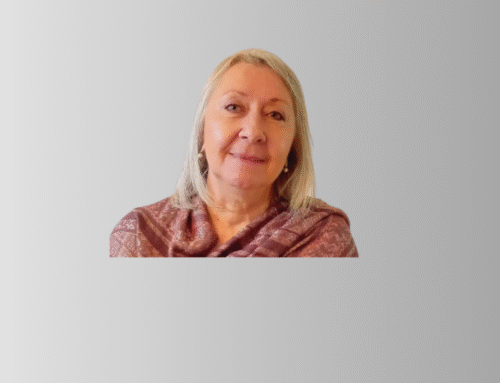MEET ROBIN MARTEN
“…It is my view that IVS (International Valuation Standards) should be at the elbow of every valuer, from those involved in cross-border valuations to those practicing at a local level in small firms.”
This was an extract from the pamphlet that I was asked by the International Valuation Standards Committee to provide a couple of years ago, to assist in its efforts to spread IVS across the world.
- THE FOUNDATION OF MY PROPERTY AND PROPERTY VALUATION CAREER
My career in property and property valuation stemmed from a two-day vocational guidance session at the age of 15 at the National Institute of Industrial Psychology in London, to establish my aptitude for potential future careers, and to recommend the appropriate course of “A” level studies, so as to allow me to defer that decision until I left school.
Four potential careers were suggested, urban surveying, business administration, the law and teaching, with a slight preference for urban surveying, for which a RICS qualification would be needed. It was suggested that I should read Estate Management, at London University, London and Cambridge being the only two Universities in the UK providing property orientated Degrees at that time.
After 2 years National Service, I obtained a London University B.Sc. (Estate Management) Degree at the College of Estate Management, which then and still now provides such Degree Course, together with the professional training for RICS Membership across the world,
I came to South Africa in 1961 to join the Property Valuation Department of Syfrets Trust in Cape Town but after six months there I then had to move back to the UK to get my RICS qualification, undertaking 4,5 years of property development in London and South East England.
The core of the College of Estate Management Degree Course was centred on property valuation and legal studies, which provided a very solid background to the success of my future career in South Africa, to which I emigrated in 1966, rejoining Syfrets as the Manager of the Property Valuation Department for the next 16 years.
At that time the main activity of the Department was to provide underlying property valuation support for the Syfrets Participation Mortgage Bond Scheme, but there was a certain amount of client property development involvement for me, reinforced by becoming the Property Advisor to the Cape Town Municipal Pension Fund in 1974, as part of overall financial services to the Fund provided by Syfrets.
Within Syfrets I was also able to build up a property consultancy practice, with a particular interest in expropriation compensation, for which the legal background gained at the College proved to be of great value, and when I left Syfrets in 1982, I was able to take 95% of my property consulting clients with me.
Most importantly, these included the Cape Town Municipal Pension Fund, and I ended up serving the Fund as Property Advisor for a total period of 23 years, establishing and building up its property portfolio by over R300 000 000.
I also represented the South African Oil Industry for many years in relation to their Oil Site Leases in South African Harbours, spending 5 years from 1984 to 1989 negotiating new Standard National lease terms with the National Harbour Authority, including the vital approach to the basis of future rental and rent revision levels for such sites.
This followed the termination of 25 to 50 year Oil Industry Tankage Site Ground Leases in Harbours across the country, at static historical rental levels.
At the very last moment, when such lease terms had been virtually finalised, such Authority decided to allow each Port to determine its own approach to such new lease terms, thus nullifying the whole exercise!
- EXPROPRIATION VALUATION ACTIVITIES
In the early days, I provided expropriation valuation support to the Cape Divisional Council and the Cape Town Municipality, but the bulk of my expropriation work was undertaken for the State Attorneys’ Office in Cape Town, with whom I built up a long-standing relationship.
Throughout the 52 years of my professional career here, I have only been involved in three High Court cases, which I put down to the fact that I have always tried to be totally objective, reviewing the position from the viewpoint of both expropriator and expropriatee, taking into account any legal constraints, before coming to any valuation conclusion.
These three cases were :
- Durr v Cape Divisional Council 1986 SA 385 (C)
- Opera House (Grand Parade) Restaurant (Pty) Ltd v Cape Town Municipality 1989 2 SA670 (C)
- Du Toit v Minister of Transport 2003 1 SA 586 (C) 2005 1 SA 297 (C)
In all three cases, the Court determinations were made at my claimed expropriation figure, the most interesting being the Du Toit case, in which I represented the Ministry of Transport, which went on to be confirmed by the Supreme Court, and was finally endorsed by the Constitutional Court at such figure
This case involved the temporary expropriation of land from a farm in the Heidelberg Area, for the upliftment of 75 000 cubic metres of gravel for the improvement of N2 road surfaces in the area
On such farm there was a small gravel pit, from which the farmer was then selling some 1 750 cubic metres of gravel annually, at the rate of R10.00 per cubic metre.
In approaching the expropriation compensation issue, I decided to consult geologists, so as to establish the total amount of gravel on the farm and surrounding areas, and discovered that the farm contained so much gravel reserves that it would take some 63 years to extract the last 75 000 cubic metres of gravel from the property, apart from very extensive other gravel deposits in such area.
Taking into account the provisions of Section 12.(5)(f) of the then Expropriation Act, which required the specific purpose of the expropriation to be disregarded, I came to the conclusion that the most loss that the farmer could expect to suffer from the expropriation gravel removal would be the loss of the freehold value and utility of the portion of the farm subject to the temporary expropriation, which would subsequently comprise a large excavation area thereon, with some form of surface rehabilitation.
This gave rise to my expropriation settlement figure of R6 000 plus the 10% expropriation solatium, as against the farmer claim for R750 000 at his sale rate of R10 per cubic metre – not much of a return for the farmer to cover his costs relating to the High Court, Supreme Court and Constitutional Court Cases!
- SOUTH AFRICAN INSTITUTE OF VALUERS
In 1971 the RICS General Practice Members of the RICS in South Africa decided to form the South African Institute of Real Estate Economists, as the RICS was little interested in such Members in this country during the apartheid years, though still involved with its Quantity Surveyor Membership here.
SAIREE Membership proved to be very static, due to RICS non-immigration from the UK, as a result of which it decided to merge with the SAIV in 1977. I had already joined the SAIV some years prior thereto, joining the Cape Branch Executive in 1974.
Later on, in view of my UK University and RICS background, my great friend John Hermann, by far the longest serving member of the National Executive (1953 – 1989), persuaded me to join the National Executive of the Institute, which I did in 1978, becoming President of the Institute for the 1982 / 1983 year, in which such 1982 year the Valuers Act was first published.
As a practising Chartered Surveyor, I had joined NATEX with two main objectives in mind – firstly, to have International Valuation Standards adopted in the country, and secondly, to encourage the establishment of appropriate property related Degrees in South Africa, for the upgrading of valuer professional education here.
At that stage property education in South Africa was limited to a National Diploma in Valuation Standards, the course being largely set by Municipal Valuers then operating Valuation Ordinances based on Site and Depreciated Improvement or Site Value approaches.
As a proponent of an alternative market value approach as the basis of municipal valuation, in terms of ability to pay criteria, such change was a further objective, and in 1983, during my Presidential term I submitted a long motivation to the Croeser Commission of Enquiry on the valuation of property for taxation purposes in South Africa, advocating the adoption of such market value approach, to see it finally achieved here during the mid-1990s.
- INTERNATIONAL VALUATION STANDARDS
In 1985 I received consent from the NATEX to apply to the International Valuation Standards Committee for SAIV Membership.
Due to UN resistance during the apartheid era, it was not until 1993 that the IVSC finally allowed the SAIV to join, and I attended my first IVSC Meeting in Melbourne that year, during which the majority of the time was devoted to the determination of the International Definition of Market Value.
At such Meeting it was very interesting to experience the wide differences of Market Value Definition opinion as between the USA and Australia on the one side, and the UK on the other, and I was able also put forward the views on behalf of the Third World with rather more simplistic approaches to such Definition, before consensus was finally reached.
This included the need to provide the context of each component of the Definition for explanatory purposes as part of the Definition, the adoption of which has since been made mandatory by the IVSC.
For the next 11 years I served as an Elected Member on the Management Board of the IVSC, meeting round the world every 6 months, which proved to be an amazing experience, interfacing with the whole spectrum of the valuer profession across the world.
These IVSC travels took me to over 20 countries around the world, including Indonesia, Thailand, Malaysia, Hong Kong, New Zealand, Sweden, Belgium, the Netherlands, Canada and Venezuela, but my most memorable visit was to Beijing, where, apart from walking up the Great Wall, the China Appraisal Society invited the Committee to dinner with the Deputy Finance Minister of China in the Great Hall of the People, off Tiananmen Square.
 I am second on the left and the Deputy Minister fifth on the left.
I am second on the left and the Deputy Minister fifth on the left.
My relationship with the IVSC also resulted in invitations for me to give plenary papers on the South African Municipal Valuation system at the 1999 World Valuation Congress in Melbourne, and the 2000 Millennium Conference of the American Appraisal Institute in Las Vegas.
However, local moves towards IVS adoption by the SAIV proceeded at a very slow pace, with the SAIV adopting the International Definition of market value in 2003 and International Valuation Standards in 2005, the SACPVP later also adopting such Standards.
- SOUTH AFRICAN UNIVERSITY DEGREES
The welcome establishment of South African Property Degrees took place in the latter half of the 1990’s, headed by the University of Cape Town’s B.Sc. and B.Sc. Honours Degrees in Property Studies, and the University of Pretoria Real Estate Degree.
In this regard I sat as an External Examiner of the UCT Degrees for a time, and served on the RICS Accreditation Committee, which was set up to investigate such Degrees at each University for accreditation, as a means of entry into RICS Membership.
The RICS also asked me to join the Africa and USA Accreditation Committee, which took me to the Universities of Columbia and Cornell in the USA, for the accreditation of their Masters Degrees in Real Estate, a greatly interesting experience during the depths of winter.
- MUNICIPAL VALUATION CONSULTANCY
My involvement with municipal valuations commenced in with the 1979 Cape Town General Valuation Roll, at the start of periodic municipal valuations of the City, then conducted by the Cape Provincial Administration.
An illustration of the need to conduct necessary background research occurred during the course of such 1979 Roll, while acting for the Oil Industry in connection with their quarry located leased oil tank and other sites in Cape Town Harbour.
At that stage, both Municipal and Divisional Council rates were payable to the City, and during the course of my background researches, I discovered that, following the 1947 major expansion of Cape Town Harbour and its incorporation into the bounds of South Africa, its title had become vested in the Divisional Council of the Cape, but the City had subsequently only incorporated the Foreshore Area into its boundary.
This left the balance of the 1947 expansion area effectively within Divisional Council legal jurisdiction, over which the City was not entitled to charge municipal rates.
The subsequent further Container Basin expansion of the Harbour had at that stage not been surveyed, and was then, as a result effectively floating out at sea, being located below the High-Water Mark forming the boundary of South Africa.
Having achieved my resultant claimed reductions in value for the various portions of the Oil Industry ownership within the Harbour at the ensuing Hearings, I left the City to sort out these jurisdiction and consequential rateability issues with the Harbour Authority.
In the final stages of my professional career, I concentrated on Municipal Valuation Objections and Appeals.
An instance of this was the submission of an Objection and Appeal against the proposed municipal valuation of the Newland Rugby Stadium at a figure of R199 000 000, which was based on a site and depreciated improvement valuation approach by the City.
With such approaches I have always argued the impact of economic obsolescence, effectively bringing down such valuation calculations towards market value levels.
In this particular case I established that the actual usage of the Stadium by Western Province Rugby was limited to 10 to 15 days per annum. As a result, at the Appeal Board Hearing I successfully argued for the Stadium valuation to be based on capitalised ticket sales income, which resulted in a reduction in the valuation to R87 500 000, such approach being reconfirmed in subsequent triennial Valuation Roll Appeals.
Due to the size and height of the Stadium, and the fact that portion of the Stadium extended over the adjoining railway line, an alternative site value for potential redevelopment purposes, after allowance for demolition costs, did not match up to such valuation level. It will be interesting to see what happens to such Stadium now, following the Western Province Rugby move to the Cape Town Stadium.
- CONCLUSIONS
As can be seen from the above, I have been greatly blessed to have been able to find my South African professional career on the teachings that I received in attaining such 1961 London University Degree, some 61 years ago!
This was illustrated a couple of years ago, when I took the President of the RICS out to dinner in Constantia, whilst on his retirement worldwide tour, who also happened to be the Principal of the College of Estate Management, now part of the University of Reading.
When he heard that I had achieved a Second Division Degree from the College in 1961 he raised his eyebrows, and confirmed that the standards of such Degree had regrettably dropped appreciably over the intervening decades.
With such University and RICS background, over the course of my career here I have sought to do what I could to advance property valuation professionalism in the country through the introduction of International Valuation Standards, while serving on the Institute’s NATEX for some 26 years, almost entirely as the only RICS member of such body during such period.
Such career has in fact involved somewhat limited general property valuation services, to enable me to concentrate on my property development, administration, consultancy and expropriation activities.
I would encourage valuers to seek to extend their range of services into such fields, if they are able to do so, as it can only broaden their opportunities, and resultant professionalism.
I finally retired from professional practice in 2020 at the age of 82, looking back on what has been a very varied, interesting and fulfilling property career, during which I was able to achieve my primary objectives here in South Africa, after years of gentle advocacy.



